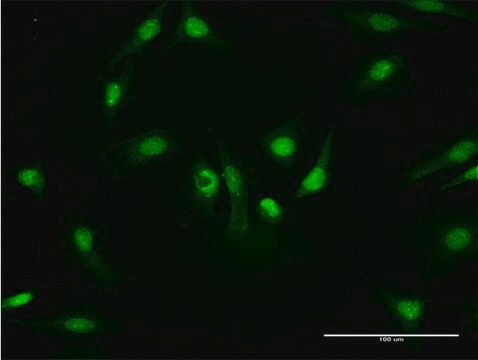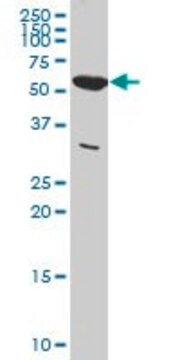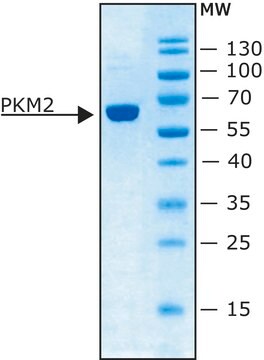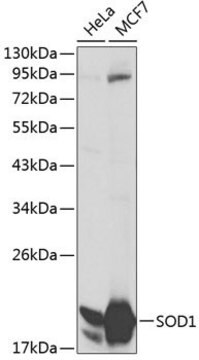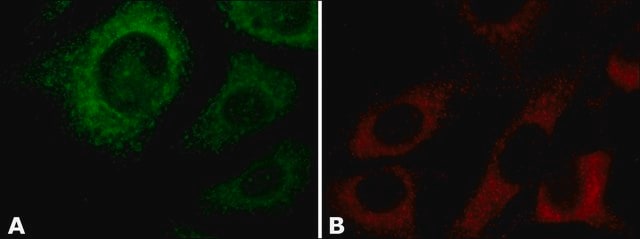SAB4200095
Anti-PKM2 (isoform M2) antibody produced in rabbit
~1.5 mg/mL, affinity isolated antibody
Sinonimo/i:
Anti-CTHBP, Anti-OIP3(OPA-interacting protein 3), Anti-PK3, Anti-PKM, Anti-Pyruvate Kinase, MUSCLE (isoform M1), Anti-TCB, Anti-THBP1 (thyroid hormone-binding protein, cytosolic)
About This Item
Prodotti consigliati
Origine biologica
rabbit
Coniugato
unconjugated
Forma dell’anticorpo
affinity isolated antibody
Tipo di anticorpo
primary antibodies
Clone
polyclonal
Forma fisica
buffered aqueous solution
PM
antigen ~60 kDa
Reattività contro le specie
human
Concentrazione
~1.5 mg/mL
tecniche
immunohistochemistry: 10-20 μg/mL using formalin-fixed paraffin embedded human colon carcinoma
immunoprecipitation (IP): 2-4 μg using HT29 cell lysates
indirect immunofluorescence: 4-8 μg/mL using HeLa cells
western blot: 0.5-1.0 μg/mL using HeLa cell extracts
Condizioni di spedizione
dry ice
Temperatura di conservazione
−20°C
modifica post-traduzionali bersaglio
unmodified
Informazioni sul gene
human ... PKM2(5315)
Categorie correlate
Descrizione generale
Specificità
Applicazioni
- chromatin immunoprecipitation (chip) assay
- western blotting
- immunofluorescence
- immunohistochemistry
Azioni biochim/fisiol
Stato fisico
Esclusione di responsabilità
Not finding the right product?
Try our Motore di ricerca dei prodotti.
Codice della classe di stoccaggio
10 - Combustible liquids
Punto d’infiammabilità (°F)
Not applicable
Punto d’infiammabilità (°C)
Not applicable
Certificati d'analisi (COA)
Cerca il Certificati d'analisi (COA) digitando il numero di lotto/batch corrispondente. I numeri di lotto o di batch sono stampati sull'etichetta dei prodotti dopo la parola ‘Lotto’ o ‘Batch’.
Possiedi già questo prodotto?
I documenti relativi ai prodotti acquistati recentemente sono disponibili nell’Archivio dei documenti.
Articoli
Warburg effect enhances glucose to lactate conversion in tumor cells, regardless of oxygen levels; impacting cancer metabolism since 1924.
Il team dei nostri ricercatori vanta grande esperienza in tutte le aree della ricerca quali Life Science, scienza dei materiali, sintesi chimica, cromatografia, discipline analitiche, ecc..
Contatta l'Assistenza Tecnica.
